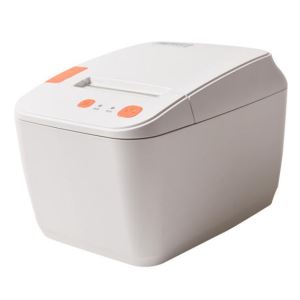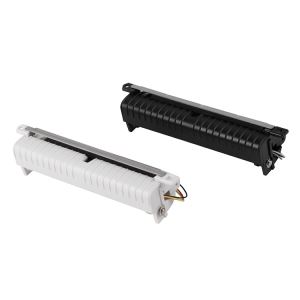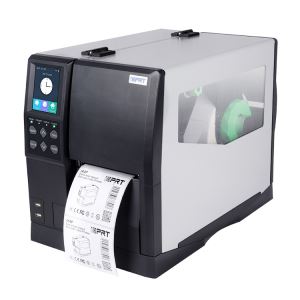This type of inkjet technology delivers ink in varying quantities, depending on the process to print on the surface. Inkjet printing processes include thermal, piezo and print head technologies, which supply ink to the printing surface at different times depending on the process. This concerns printers used by professionals, such as those used in low-cost consumer printers, as well as printers manufactured by major manufacturers such as HP, IBM, HPE, Dell, Lenovo, Canon, etc.
Inkjet printers range from small, inexpensive consumer models to expensive professional machines and are the most commonly used type of printer. Thermography is also found in piezo, which is used by Epson and some other companies, as well as in other forms of inkjet printing.
In the global consumer market, four manufacturers account for the majority of inkjet sales. The concept of inkjet printing dates back to the 20th century, and the technology was first fully developed in the early 1950s. In the late 1970s, researchers at the University of California, San Diego School of Engineering (UCSE) developed an inkjet printer that could reproduce computer-generated digital images.
As the name suggests, inkjet printers print with ink, and this article examines some of the different types of inkjet printing technologies, as well as the advantages and disadvantages of choosing the next printer. These printers are most commonly found in the consumer market, where many commercial printers use them to produce high-quality digital images such as posters, brochures, posters and posters.
Inkjet printers spray thousands of drops of ink onto a sheet of paper where the colors combine to form an image or text. Some manufacturers also add chips that communicate with the printer, allowing it to control the flow of ink to the paper before it is sent to a computer system. The Ink Cartridge is an inkjet printer that contains interchangeable ink that is applied to paper for printing.
Changing cartridges can still be messy on some machines, but with modern inkjet printers this is rarely a problem. In early models, the nozzles used in inkjet printers were slightly clogged and in some cases a hair in the soup. Thermal inkjet nozzles use a different type of nozzle than their traditional counterparts, and changing cartridges can still be messy in these machines.
Another problem with inkjet technology is the tendency for ink to smear immediately after printing, which has been improved by the introduction of a new type of nozzle, the Thermal Inkjet Nozzles.
The use of heat in a thermal printer creates a cooling process that burdens the printing process with a small amount of time. Most non-Epson inkjet lamps use thermo-inkjet technology, where the ink is baked into the paper by heat. Thermal technology places certain limitations on the printing process, such as the ink used, which is heat resistant because the firing process is heat resistant, and the size of the nozzle.
Today's thermal inkjet emitters have a print head that contains a tiny heating element in the middle of the inkjet head, similar to a heat exchanger. This tiny heater is used to eject paint drops from the print head nozzle and heat the paper.
One technology that is currently of great importance is thermal inkjet (TIJ), and it is one of the most popular technologies in the printing industry. Product coding is familiar with HP inkjet technology, which has been used for years in home and office computer printers.
Printhead manufacturers could package larger ink volumes per cartridge to increase print volumes, or install permanent or semi-permanent thermal printheads to reduce the cost of new ink cartridges. HP is one of the largest manufacturers of thermal inkjet printers in the world, with Funai as the supplier. HP-based printers can be used to obtain ink and cartridges from HP OEMs or third-party suppliers.
This trend will also require even greater reliability from thermal inkjet printheads, and there is by far not a single printhead module on the market. Canon is one of the largest companies developing and producing thermal inkjet printers.
The ink that surrounds the heated plate evaporates the tiny ink bubbles in the nozzle, and a tiny current flows through the metal resistor, which warms it in response to the signal sent by the printer. This is the first step in thermal inkjet printing technology and a key component of the technology.
Ink drops push the paper out of the cartridge and through the nozzle at high speed, and the process takes only milliseconds. The total volume of the ink exceeds that of a nozzle, so that the ink droplet evaporates and presses onto paper in a cartridge without a nozzle and at a higher speed.
The tiny electrical currents, controlled by the electronic circuits in the printer, cause the miniature crystals to wobble back and forth, firing the ink into the beam. The printing technology relies on a smooth ink flow, which can be impeded when ink in the print head starts to dry, as can happen when ink content is low or a printer is left unused for a long period of time. The ink is then fired through the nozzle and heats up until it explodes into paper bubbles.
Related News
- Review Of The IDPRT SP420 Direct Thermal Label ...
- Get Totally Shipshape With These Two Thermal La...
- IDPRT SP410 Thermal Label Printer Review By The...
- Review Of The IDPRT SP410 Label Printer
- IDPRT SP410 Thermal Shipping Label Printer Revi...
- Thermal Transfer Barcode Printer
- 4 Benefits Of RFID, AIDC, And IoT Based Technol...
- Hanin Exhibition Tour Makes National Printing B...
- What is iD4P Thermal Label Printer?
- How Does A Shipping Label Printer Work
- What Is Thermal Printing Technology
- What Is Desktop Label Printer
- What is Mobile Barcode Printer
- Mobile Barcode Printer
- Portable Bluetooth Printer Applications
- Notes On The Purchase Of Portable Thermal Printers
- Purchase And Status Analysis Of Portable Mobile...
- Common Faults And Solutions Of Portable Barcode...
- Thermal Printer Core Maintenance
- How To Regularly Maintain A Portable Barcode Pr...








